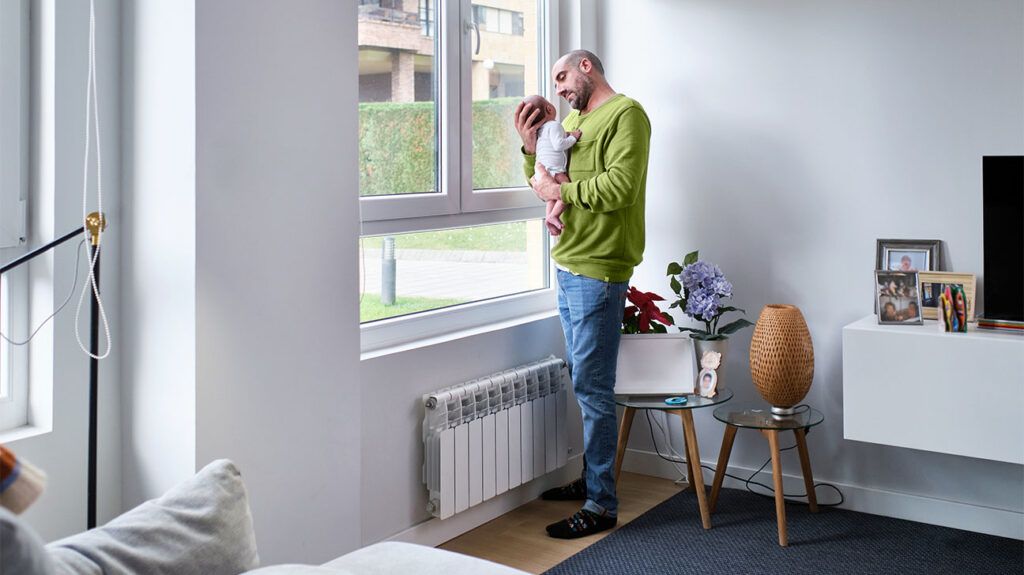Croup is a condition that affects the lungs, voice box, and windpipe in young children. It most often occurs due to a group of viruses called human parainfluenza viruses (HPIVs). No vaccine can currently prevent HPIVs.
Doctors can usually identify croup by its distinct “barking” cough. The condition causes inflammation in the windpipe, the voice box, and the tubes of the lungs. It mainly occurs due to HPIVs but can also result from other viruses, such as measles, or from bacteria, including diphtheria.
Most cases of croup get better in a few days, but it can be severe and life threatening in rare cases.
This article looks at the availability of a croup vaccine and other ways to treat and prevent croup.

There is
HPIVs are not the only cause of croup. Croup might occur due to
Some bacterial infections, including diphtheria, can also cause croup.
Vaccines are available for:
An adenovirus vaccine is available, but only military personnel at risk of exposure are
However, influenza and diphtheria vaccinations may reduce the number of children who develop croup.
Doctors will often recommend managing mild croup at home. A person can take several steps to soothe a child’s croup symptoms while they recover, such as:
- Pain relief medications: Children with croup who are older than 6 months may take ibuprofen to relieve pain and reduce body temperature. This medication is available as a liquid for children.
- Hydration: It is important to ensure that the child drinks plenty of fluids so that they get enough hydration.
- Comfort: Crying can make croup symptoms worse. If the child wakes up in the middle of the night due to croup symptoms, a hug, a back rub, time with their favorite song or toy, or verbal reassurance can help.
If symptoms do not improve, contact a doctor.
Learn more about home remedies for croup.
Treatment for croup depends on how severe it is.
A doctor may prescribe a single dose of a corticosteroid medication — usually dexamethasone or prednisolone — to reduce throat swelling.
Children with severe croup may need to stay in the hospital. They may receive epinephrine through a nebulizer that converts the medication to a breathable mist. This may soothe symptoms for up to 2 hours.
Children who find it difficult to breathe due to croup may need oxygen through a mask or intubation. A doctor administers these treatments in a hospital. It is crucial to seek immediate medical help if a child has breathing problems.
Croup symptoms usually get better within a few days. However, symptoms may last up to 2 weeks.
Croup may lead to other types of infections, including pneumonia and middle ear infections. It is important to seek medical advice if symptoms do not improve even after treatment or if new symptoms develop.
Croup is difficult to prevent, but it may be possible to decrease a child’s chances of contracting croup. Although no vaccine is available, good hygiene practices can reduce the risk of transmitting HPIVs. These practices
- washing the hands often with soap and water, which is especially important during child care
- avoiding physical contact with the eyes, nose, and mouth
- avoiding close contact with other people during periods of sickness
- wearing a face mask, which may help prevent transmission of HPIVs
Breastfeeding or chestfeeding may also reduce a baby’s risk of developing croup. Breast milk contains vital proteins that help a baby’s body defend itself against infections.
Here are some frequently asked questions about croup.
Are croup and whooping cough the same?
These two conditions are not the same. Croup is a viral disease that
However, the two conditions cause similar symptoms, and both can occur in children up to around 5 years of age. Whooping cough can occur at any age, though it is often more severe in infants and young children.
At what age does croup stop?
Croup typically occurs between the ages of 6 months and 3 years. However, in rare cases, it can develop in children up to 15 years old.
As children grow, so do their windpipes. The swelling of the airway below the vocal cords does not interfere with breathing as severely in older children, meaning that croup is no longer likely to develop.
Learn about croup in newborns.
Is croup an RSV?
Croup is a respiratory illness that
Learn more about the connection between croup and RSV.
There is no vaccine for HPIVs, the viruses that most often cause croup. However, croup can also result from several other types of infections, including influenza, diphtheria, and measles. Vaccination for influenza and diphtheria may reduce the number of children who get croup.
Good hygiene practices and breastfeeding or chestfeeding may help people reduce a child’s chances of developing croup. Treatment for mild croup often involves a single-dose corticosteroid, pain relief, fluids, and soothing. More severe croup might require in-hospital treatment and breathing support.
